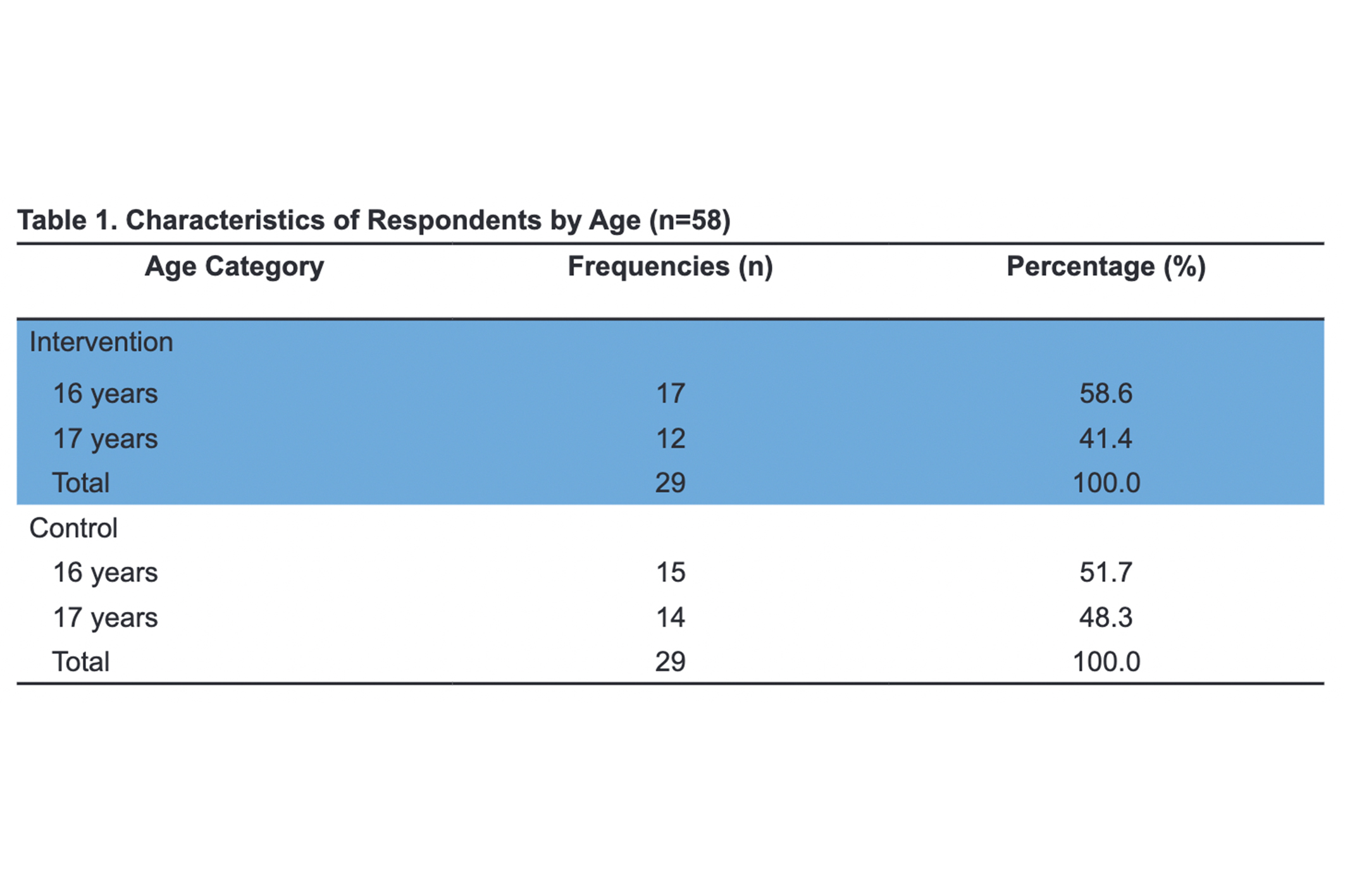Abstract
Background: Dysmenorrhea is cramping pain and is often followed by lower back pain, nausea and vomiting, headache and diarrhea. Dysmenorrhea refers to the overall pain symptoms that arise during menstruation, there are 2 types of dysmenorrhea, namely, primary and secondary dysmenorrhea. is a cyclic menstrual pain without pathological abnormalities in the pelvis is called Primary dysmenorrhea. There are 2 types of Management primary dysmenorrhea which are pharmacological and non-pharmacological. The treatment for Non-pharmacological can be done with pelvic rocking exercise and Buteyko Exercise. The movements in pelvic rocking exercise and Buteyko Exercise can stimulate the body to release endorphins which function as natural sedative hormones, and can also facilitate blood flow to the uterus so that pain is reduced.
Purpose:The effect of pelvic rocking exercise and Buteyko Exercise on reducing pain in primary dysmenorrhea was the purpose of this research.
Methods: This research is a quantitative study with a quasi-experimental design, pre-test and post-test designs. Nonequivalent control group design. The amount of the sample are 58 people by using purposive sampling technique. The research instrument used a standard operating procedure sheet for pelvic rocking exercise and Buteyko Exercise, a monitoring sheet, a stop watch and a numeric rating scale pain measurement sheet. The hypothesis is tested by using the independent T Test.
Results: Before the intervention, the p-value was 0.063. The results of this research was p value 0.001.
Conclusion: This research can also be used as input for nurses to make new decisions in improving the quality of nursing care with non-pharmacological therapeutic approaches. There is an effect of pelvic rocking exercise and Buteyko Exercise on reducing pain in primary dysmenorrhea. The results of this research can be used as a contribution of thoughts and references as a more in-depth study of pain reduction in primary dysmenorrhea.
References
Abd El-Mawgod, M. M., Alshaibany, A. S., & Al-Anazi, A. M. (2016). Epidemiology of dysmenorrhea among secondary-school students in Northern Saudi Arabia. Journal of the Egyptian Public Health Association, 91(3), 115-119. http://doi.org/10.1097/01.EPX.0000489884.20641.95
Abedel Azim Mohamed, H., & Mohamed Hafez, A. (2017). Effect of practicing pelvicrocking exercises on primary dysmenorrhea among adolescent girls: A randomized controlled trial. Egyptian Journal of Health Care, 8(2), 241-255. http://doi.org/10.21608/ejhc.2017.47169
Abreu-Sánchez, A., Parra-Fernández, M. L., Onieva-Zafra, M. D., Ramos-Pichardo, J. D., & Fernández-MartÃnez, E. (2020). Type of dysmenorrhea, menstrual characteristics and symptoms in nursing students in southern spain. Healthcare, 8(3), 302. http://doi.org/10.3390/healthcare8030302
Bradykinin, O. F., Peth, G., & Reeh, P. W. (2012). Sensory and signaling mechanisms of bradykinin, eicosanoids, platelet-activating factor, and nitric oxide in peripheral nociceptors. Physiological Reviews, 92(4), 1699-1775. http://doi.org/10.1152/physrev.00048.2010
Chen, J., Abbod, M., & Shieh, J.-S. (2021). Pain and stress detection using wearable sensors and devices—A review. Sensors, 21(4), 1030. http://doi.org/10.3390/s21041030
Dawood, M. Y. (2006). Primary dysmenorrhea: advances in pathogenesis and management. Obstetrics & Gynecology, 108(2), 428-441. http://doi.org/10.1097/01.AOG.0000230214.26638.0c
Ferries-Rowe, E., Corey, E., & Archer, J. S. (2020). Primary dysmenorrhea: diagnosis and therapy. Obstetrics & Gynecology, 136(5), 1047-1058. http://doi.org/10.1097/AOG.0000000000004096
Gerbershagen, H. J., Rothaug, J., Kalkman, C. J., & Meissner, W. (2011). Determination of moderate-to-severe postoperative pain on the numeric rating scale: a cut-off point analysis applying four different methods. British Journal of Anaesthesia, 107(4), 619-626. http://doi.org/10.1093/bja/aer195
Hassan, Z. M., Riad, N. M., & Ahmed, F. H. (2012). Effect of Buteyko breathing technique on patients with bronchial asthma. Egyptian Journal of Chest Diseases and Tuberculosis, 61(4), 235-241. http://doi.org/10.1016/j.ejcdt.2012.08.006
Lacovides, S., Avidon, I., & Baker, F. C. (2015). What we know about primary dysmenorrhea today: a critical review. Human Reproduction Update, 21(6), 762-778. http://doi.org/10.1093/humupd/dmv039
Jang, Y., Kim, M., & Hwang, S. W. (2020). Molecular mechanisms underlying the actions of arachidonic acid-derived prostaglandins on peripheral nociception. Journal of Neuroinflammation, 17(1), 1-27. http://doi.org/10.1186/s12974-020-1703-1
Karapanou, O., & Papadimitriou, A. (2010). Determinants of menarche. Reproductive Biology and Endocrinology, 8(115). http://doi.org/10.1186/1477-7827-8-115
Moayedi, M., & Davis, K. D. (2013). Theories of pain : from specificity to gate control. Journal of Neurophysiology, 109(1), 5-12. http://doi.org/10.1152/jn.00457.2012
Mohamed, H. A. A., & Hafez, A. M. (2017). Effect of practicing pelvicrocking exercises on primary dysmenorrhea among adolescent girls: A randomized controlled trial. Egyptian Journal of Health Care, 8(2), 241-255. http://doi.org/10.21608/ejhc.2017.47169
Omidvar, S., Bakouei, F., Amiri, F. N., & Begum, K. (2016). Primary dysmenorrhea and menstrual symptoms in Indian female students: Prevalence, impact and management. Global Journal of Health Science, 8(8), 135-144. http://doi.org/10.5539/gjhs.v8n8p135
Origoa, D., Tarantino, I., Piloni, S., & Andrea. (2021). Secondary dysmenorrhea and dyspareunia associated with pelvic girdle dysfunction: A case report and review of literature. Elsevier Journal of Bodywork and Movement Therapies, 27, 165-168. http://doi.org/10.1016/j.jbmt.2021.03.013
Sawyer, S. M., Sazzopardi, P., Wickremarathne, D., & Patton, G. C. (2018). The age of adolescence. The Lancet Child & Adolescent Health, 2(3), 223-228. http://doi.org/10.1016/S2352-4642(18)30022-1
Vardeh, D., Mannion, R. J., & Woolf, C. J. (2016). Toward a mechanism-based approach to pain diagnosis. The Journal of Pain, 17(9), T50-T69. http://doi.org/10.1016/j.jpain.2016.03.001
Yang, H., Zhou, B., Prinz, M., & Siegel, D. (2012). Proteomic analysis of menstrual blood. American Society for Biochemistry and Molecular Biology, 11(10), 1024-1035. http://doi.org/10.1074/mcp.M112.018390

This work is licensed under a Creative Commons Attribution-ShareAlike 4.0 International License.
Copyright (c) 2022 Diana Rhismawati Djupri, Irfan Said, Hanik Rohmah Irawati, Saskiyanto Manggabarani


